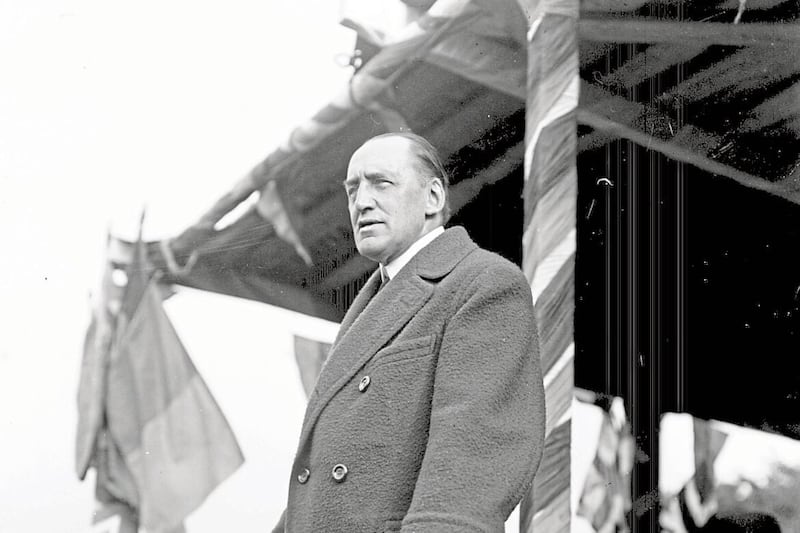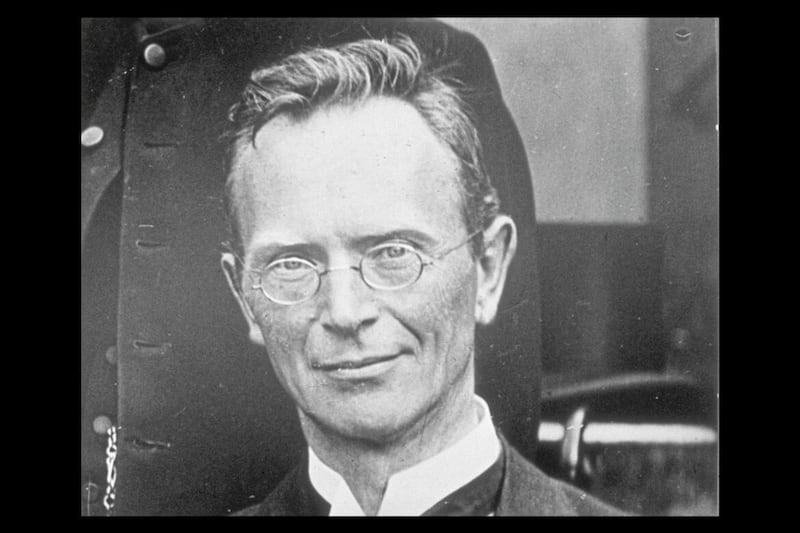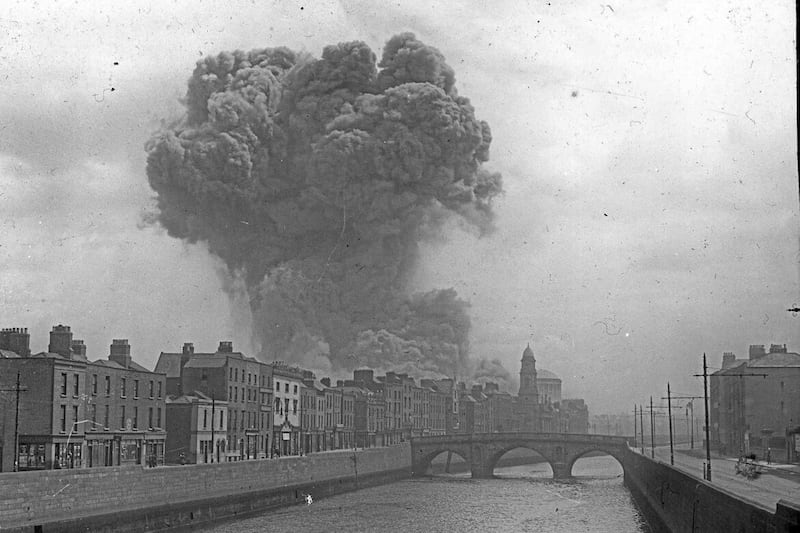IN JANUARY 1921, despite the passing of the Government of Ireland Act the previous month, there still was a great deal of uncertainty surrounding the impending partition of Ireland planned for that year.
The primary purpose of the Act was to make the Northern Ireland parliament operational. Few people were under any illusions that the southern Ireland parliament would function considering the wholescale opposition to the Act in the 26 counties.
While there was little doubt that Northern Ireland would come into being in 1921, the ‘appointed day’ of its establishment was still up in the air and its relationship with the rest of Ireland also up for negotiation, at least in the eyes of the British prime minister David Lloyd George, much to the dismay of Ulster unionists.
Historian Ged Martin has written, "so far as Partition is concerned" the decade from 1912 to 1922 "counted for a great deal". The year 1921 also counted for a great deal in bringing about the type of partition Ireland eventually experienced.
The timing of the establishment of Northern Ireland was dependent on the creation of the governmental infrastructure of a new political entity almost from scratch. While there was a ready-made infrastructure of government departments, buildings and personnel in Dublin, none existed in Belfast.
The recently appointed assistant under-secretary for Belfast, Ernest Clark, claimed as much when he declared: "I found myself setting out to form a new 'administration' armed only with a table, a chair and an act of Parliament."
Clark and his team of no more than 20, worked tirelessly to create seven government departments and obtained buildings and some key personnel by May 1921. Northern Ireland came into being on May 3, with the election for the northern parliament held on May 24. The first meeting of the northern parliament was held on June 7 with the announcement of Prime Minister James Craig’s first cabinet made soon after.
When King George V officially opened the parliament on June 22 Northern Ireland’s future partitioned from the rest of Ireland seemed assured.
The new entity had a temporary feel to it initially, though. Such was the makeshift nature of Northern Ireland that a temporary home for its parliament was found at the Presbyterian Church in Ireland’s Assembly College in Belfast, with a permanent parliament in Stormont not opened until 1932. For the 12 years before a permanent courthouse for Northern Ireland was built in 1933, temporary accommodation at the Antrim County Courthouse on Belfast's Crumlin Road was used.
When Northern Ireland came into being in summer 1921 the jurisdiction had very limited powers; it still needed to be equipped with government services.
The transfer of services was stalled due to only one of the Irish jurisdictions being operational under the Government of Ireland Act. The British government insisted both Irish governments needed to be in place in order for this to happen, something that was acutely embarrassing for the northern government. It had no control over policing or law. Without the transfer of services, the project seemed stillborn.
The Irish News stated on August 6 that the northern parliament was, "inherently unworkable… Sir James Craig’s government cannot undertake any work with any degree of permanency attaching to it because there can be no permanency in this Partition".
The Freeman’s Journal described the northern parliament as "a pigmy parliament". Samuel Watt, permanent secretary to the northern ministry of home affairs, contended that by delaying the transferring of services, "the whole of the northern government will prove to be a farce, and that the northern parliament will be nothing more than a debating society".
The parliament was adjourned from June 24 until September 20 1921 as there was so little business that could be conducted.
Northern Ireland’s constitutional position was also not guaranteed after it came into being. Craig believed that "no coercion of Ulster" was among Lloyd George’s non-negotiable commitments. On July 18, however, Lloyd George put forward "five suggestions to Craig and his ministers as to how they might accommodate [Sinn Féin leader Éamon] de Valera’s requirement of Irish unity with local autonomy for the north devolved from Dublin", which was emphatically rejected by Craig and his colleagues.
During the Treaty negotiations from October to December 1921, the two primary issues discussed were Ulster and the crown. The Irish were successful in reopening the Ulster question, rekindling matters that unionists thought were settled. Once the Irish delegation stated that their allegiance to crown and empire was contingent on Ireland’s "essential unity", Lloyd George and others in the British government appeared open to changing Northern Ireland’s status if Sinn Féin would accept allegiance to the crown.
At a meeting between Lloyd George and Craig in early November, the former stated that "two dominions in Ireland was impractical and indefensible". Lloyd George unsuccessfully tried to squeeze Craig into accepting an all-Ireland parliament. Craig did not budge, and pressed for the transfer of services to Northern Ireland.
On November 5, Lloyd George agreed to transfer services, without the existence of a government in the south; the likes of finance, law and order, local government, agriculture and education were transferred to the north from November 22 1921 to February 1 1922.
The Irish delegation were aware that the northern jurisdiction was not fully functioning when the conference began in October, demonstrating that partition could be negotiable, but they appeared unaware of how to use this to their advantage. The significance of services being transferred to the north seemed lost on almost all back in Dublin too.
With the avenue of reaching a settlement by pressurising Craig now closed, Lloyd George squeezed the Sinn Féin delegation instead by dangling the idea of a boundary commission to Arthur Griffith and Michael Collins, which formed the basis of the Anglo-Irish Treaty’s main provision relating to Ulster, Article 12.
It stipulated that if Northern Ireland opted not to join the Irish Free State, as was its right under the Treaty, a boundary commission would determine the border "in accordance with the wishes of the inhabitants, so far as may be compatible with economic and geographic conditions".
Ulster unionists were vehemently opposed to the boundary commission. Firstly, they were not party to the Treaty and yet were now obliged to adhere to its clauses. The boundary commission reopened uncertainty and put Northern Ireland’s future in doubt yet again.
By signing the Treaty, Sinn Féin formally accepted partition. The inclusion of the boundary commission, however, gave hope to nationalists of the transfer of much of northern territory to the Irish Free State, leaving the remainder unviable.
One of the objectives of the Treaty, at least on the British side, was to normalise relations between both Irish jurisdictions. In many ways, the Treaty led to the opposite. The boundary commission hung over Northern Ireland. Nationalists felt they could continue to ignore and obstruct the northern jurisdiction, particularly in areas of nationalist majorities. It just added to the vulnerability and paranoia of unionists.
Craig stated as much to Winston Churchill in May 1922 when he claimed, "the Boundary Commission has been at the root of all evil".
Few would have imagined in 1912 that there would be two Irish jurisdictions a decade later. Even within 1921, when Ireland was partitioned, there were many twists and turns that provided little certainty by the end of the year. This, on top of the violence that accompanied its birth and the disgruntlement felt by the one-third nationalist minority within its territory, left Northern Ireland in a combustible atmosphere as 1922 dawned.
Cormac Moore is author of Birth of the Border: The Impact of Partition in Ireland (Merrion Press).








